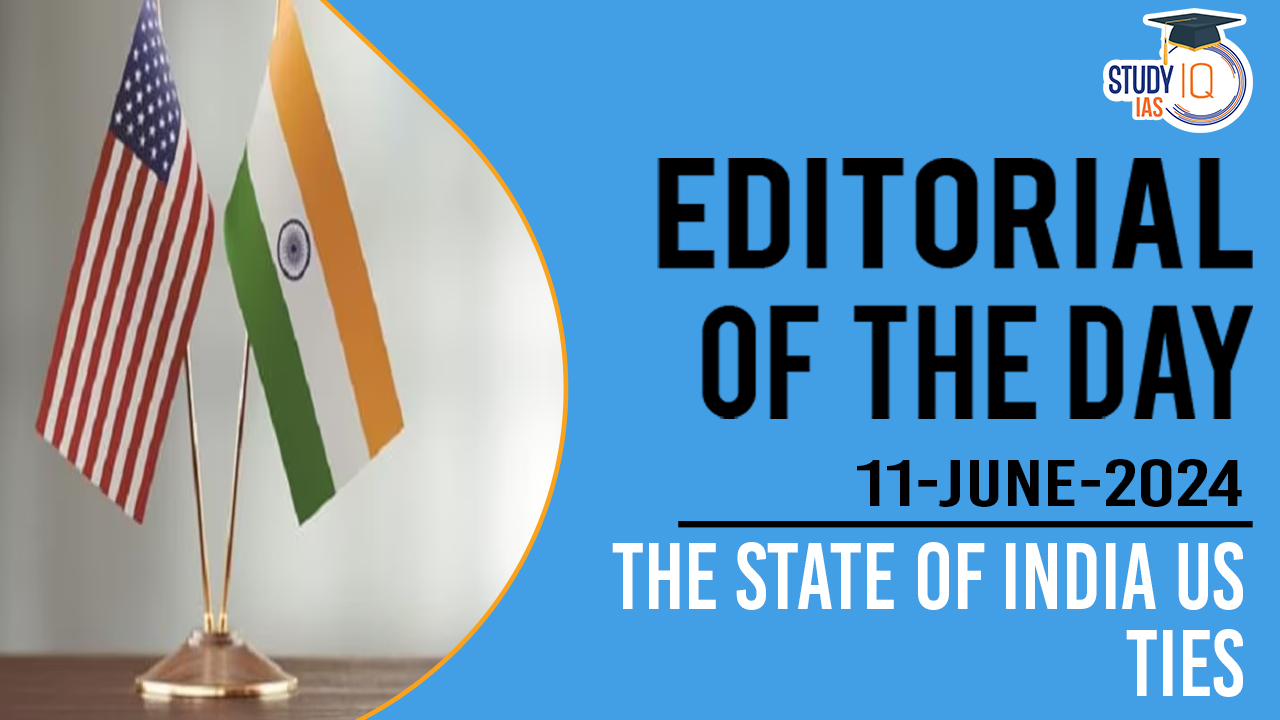Context: This month commemorates the one-year anniversary of Prime Minister Narendra Modi’s state visit to the United States.
India-US Relations
- Strong Strategic Ties: Over the past 25 years, India and the US have built robust strategic ties with dialogues in various spheres such as climate change, green energy, critical and emerging technologies, and outer space. For example:
- S.-India Climate and Clean Energy Agenda 2030 Partnership: Launched to tackle the climate crisis and achieve the Paris Agreement goals.
- India-United States New and Emerging Renewable Energy Technologies Action Platform (RE-TAP): Inaugural meeting held to promote collaboration on renewable energy technologies and systems.
- Initiative on Critical and Emerging Technology (iCET): Launched in January 2023 to enhance U.S.-India relations. Aims to develop an open, accessible, and secure technology ecosystem.
- Space Cooperation:NASA and ISRO are working on a strategic framework for human spaceflight cooperation.
- Joint effort to launch the NASA-ISRO Synthetic Aperture Radar (NISAR) satellite planned for 2024.
- India signed the Artemis Accords, aligning with the U.S. vision for beneficial space exploration.
- Increased Strategic Trust: The conclusion of foundational agreements, military exercises, and growing interoperability has resulted in greater strategic trust.
- For example: Focus shifted away from equating India-Pakistan relations, with less U.S. commentary on Jammu-Kashmir.
- The two nations have signed a series of foundational agreements that enhance military cooperation and interoperability. These include:
- The General Security of Military Information Agreement (GSOMIA)
- The Logistics Exchange Memorandum of Agreement (LEMOA)
- The Communications Compatibility and Security Agreement (COMCASA)
- The Basic Exchange and Cooperation Agreement (BECA) for Geospatial Intelligence.
- Shared Concerns: Both countries share concerns over China’s aggression and have increased engagement with the Quad, aligning with the U.S. Indo-Pacific strategy.
Not-So-Good Areas
- Differences on Global Conflicts: India and the US hold different views on the Russia-Ukraine war. The US frames it as an issue of international law and humanitarian principles, while India considers the impact on food, fertiliser, and energy security for the Global South.
- Multilateral Cooperation on China: Cooperation within the Quad has slowed down due to logistical issues, such as cancelled meetings and rescheduled summits.
- Diplomatic Challenges: The absence of an Indian Ambassador in the US and strained ties with the US Ambassador in India have affected diplomatic relations.
- The US State Department’s comments on democracy and religious freedom in India have also caused friction.
What Could Become Ugly?
- Alleged Assassination Plot: The alleged involvement of Indian security officials in an assassination plot against Khalistani separatist Gurpatwant Singh Pannun in New York has strained relations with the US.
- Impact on Diaspora: Concerns have grown within sections of the Indian diaspora in the US who feel targeted by India, including those accused of terrorism.
The Road Ahead
- Restarting the Relationship: With a new Indian Prime Minister and upcoming US elections, both countries need to restart their engagement and address challenges.
- Upcoming Opportunities: The upcoming G-7 outreach summit and iCET review provide opportunities for renewed cooperation.
- Election Dynamics: The U.S. election cycle might influence the future direction of bilateral ties, with potential changes depending on the outcome.
- Coalition Realities: Post-election coalition dynamics in India could also reshape how India engages internationally, especially with the U.S.


 Utkal Divas 2025: Odisha Foundation Day ...
Utkal Divas 2025: Odisha Foundation Day ...
 List of Military Exercises of India 2024...
List of Military Exercises of India 2024...
 GPS Spoofing and Its Impact in India: A ...
GPS Spoofing and Its Impact in India: A ...





















